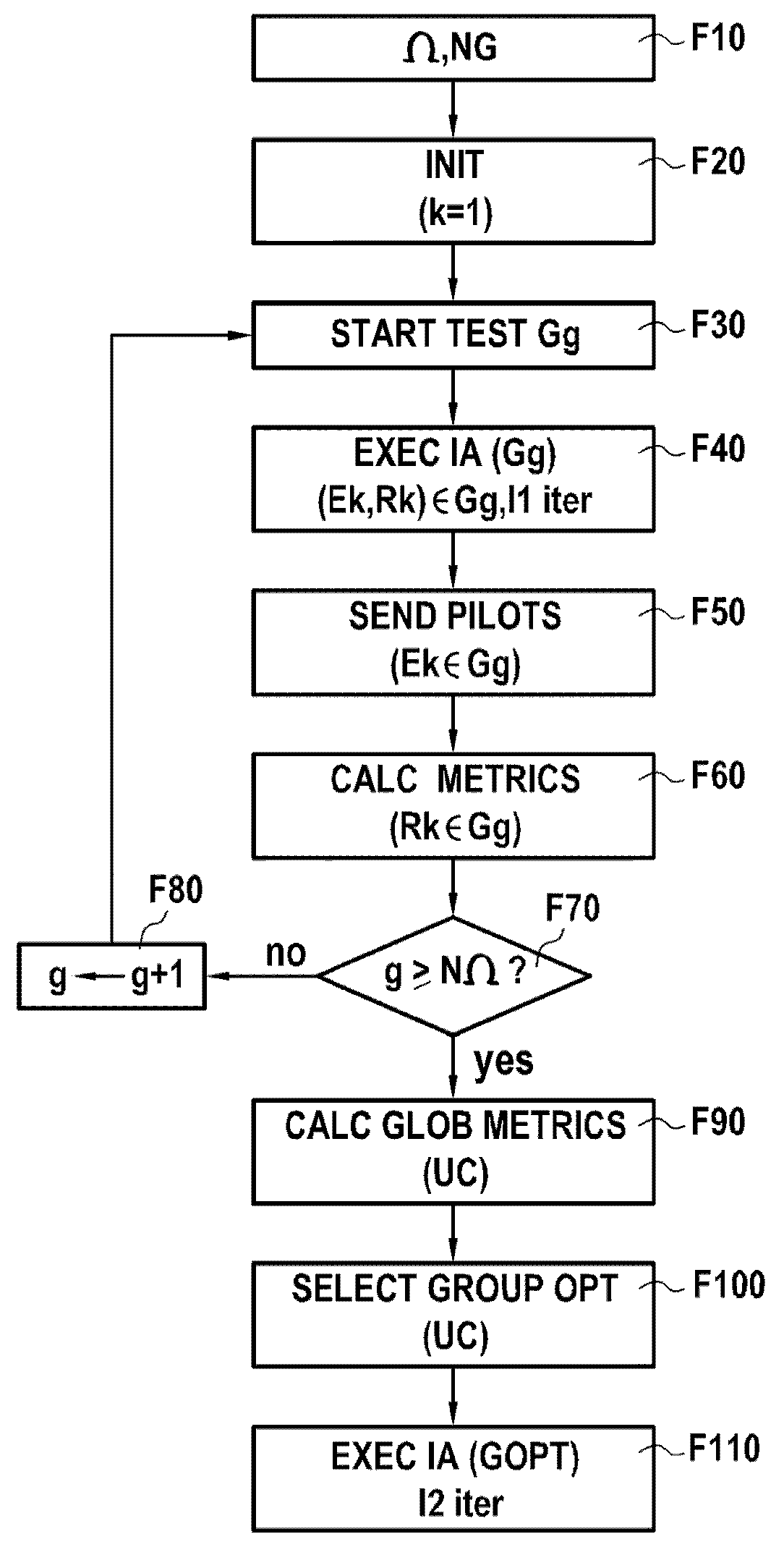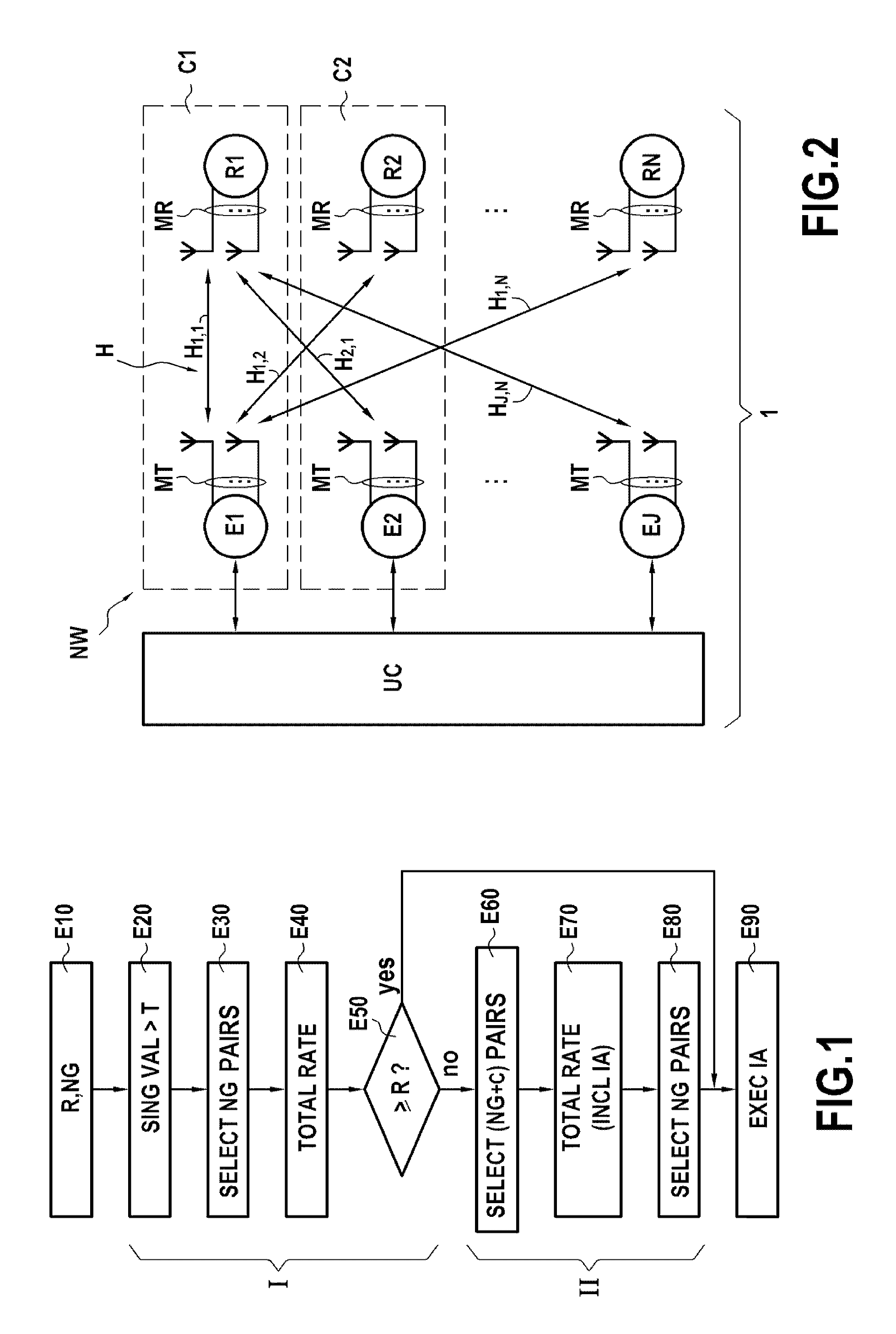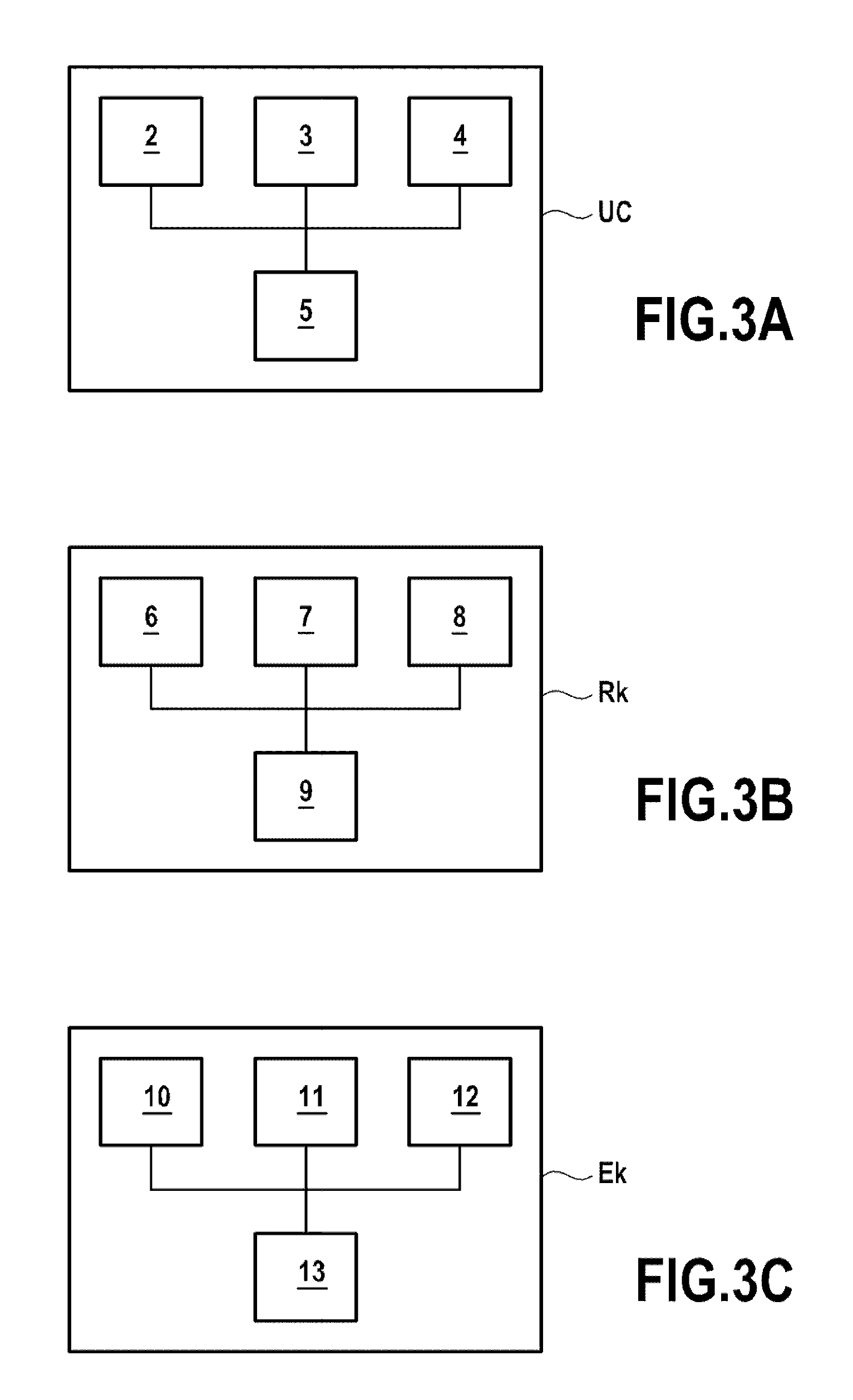Method of grouping transmitter-receiver pairs for communicating over a communications network
a communication network and transmitter-receiver technology, applied in the field of communication, can solve the problems of affecting the transmission speed of the transmission network, unable to ensure the transmission network performance, and unable to take into account so as to achieve the effect of improving the total spectrum efficiency of the system, maximizing the system spectrum efficiency, and improving the estimation of these directions
- Summary
- Abstract
- Description
- Claims
- Application Information
AI Technical Summary
Benefits of technology
Problems solved by technology
Method used
Image
Examples
Embodiment Construction
[0091]FIG. 2 shows a communications network NW system 1 in accordance with a particular embodiment of the invention in its environment.
[0092]In accordance with the invention, the system 1 comprises:[0093]a plurality of transmitters E1, E2, . . . , EJ in accordance with the invention;[0094]a plurality of receivers R1, R2, . . . , RN in accordance with the invention; and[0095]a central unit UC in accordance with the invention.
[0096]In this example, each transmitter is fitted with MT transmit antennas, where MT>1, and each receiver is fitted with MR receive antennas, where MR>1.
[0097]In the presently-described example, the network NW is a WiFi® network: the transmitters E1, E2, . . . , EJ are access points to the network NW and the receivers R1, R2, . . . , RN are terminals of users seeking to access the network NW.
[0098]Naturally, the invention applies in other contexts, and in particular to other communications networks and to other transmitter and / or receiver devices. Thus, by way o...
PUM
 Login to View More
Login to View More Abstract
Description
Claims
Application Information
 Login to View More
Login to View More - R&D
- Intellectual Property
- Life Sciences
- Materials
- Tech Scout
- Unparalleled Data Quality
- Higher Quality Content
- 60% Fewer Hallucinations
Browse by: Latest US Patents, China's latest patents, Technical Efficacy Thesaurus, Application Domain, Technology Topic, Popular Technical Reports.
© 2025 PatSnap. All rights reserved.Legal|Privacy policy|Modern Slavery Act Transparency Statement|Sitemap|About US| Contact US: help@patsnap.com



